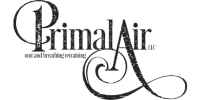
How Orofacial Myofunctional Therapy Can Alleviate TMJ Disorders and Facial Pain
How Orofacial Myofunctional Therapy Can Alleviate TMJ Disorders and Facial Pain
Problem Identification: Living with TMJ Disorders
If you’ve ever experienced persistent jaw pain, clicking or popping sounds when chewing, tension in your face, or chronic headaches that seem to have no clear origin, you might be suffering from a temporomandibular joint disorder, or TMJ disorder.
TMJ refers to the joints that connect your jawbone to your skull, allowing you to talk, chew, and yawn. When these joints or the muscles around them become dysfunctional, it can lead to a cascade of symptoms. These include jaw stiffness, facial pain, difficulty chewing, ringing in the ears (tinnitus), and even neck and shoulder discomfort.
While many sufferers turn to night guards, muscle relaxants, or even surgery, one critical element is often overlooked: how the muscles of the face and mouth function, and more importantly, how they should function.
That’s where Orofacial Myofunctional Therapy (OMT) enters the conversation.
Consequence Amplification: The Real Cost of Ignoring TMJ Dysfunction
Let’s look beyond jaw discomfort for a moment. Chronic TMJ disorders don’t exist in a vacuum they often signal broader dysfunctions in breathing, posture, and facial muscle coordination.
Prolonged TMJ disorders can lead to:
Sleep disruptions, often due to nighttime clenching or obstructed breathing.
Mouth breathing, which alters natural facial development in children and contributes to dental problems and speech delays.
Postural imbalances, particularly in the neck and shoulders, resulting in tension headaches.
Mental health struggles, as chronic pain and poor sleep erode mood and resilience.
When left unaddressed, these issues compound, affecting your quality of life, ability to concentrate, and even long-term facial structure.
The good news? These consequences can often be reversed or prevented by retraining how your face and mouth function with a little-known but rapidly growing therapy.
What is Orofacial Myofunctional Therapy?
Orofacial Myofunctional Therapy (OMT) is a non-invasive, exercise-based approach to correcting the way the muscles of the face, tongue, mouth, and throat function. It blends techniques from physical therapy, speech therapy, and breathing retraining.
In the case of TMJ disorders, OMT focuses on:
Correcting tongue posture (the tongue should rest gently against the roof of the mouth, not lie flat or press against the teeth)
Encouraging nasal breathing over mouth breathing
Training balanced use of facial and jaw muscles
Strengthening the oropharyngeal airway to support healthy sleep and swallowing patterns
The foundation of OMT lies in identifying myofunctional disorders patterns of muscle behavior that may have developed from infancy or resulted from trauma, orthodontic changes, or chronic habits like thumb sucking or mouth breathing.
How OMT Specifically Alleviates TMJ Pain
1. Restoring Proper Tongue Posture
Your tongue is a surprisingly powerful muscle that influences your entire orofacial structure. Poor tongue posture such as letting the tongue rest low in the mouth or pressing against the front teeth can destabilize the jaw over time.
When your tongue is correctly positioned on the roof of the mouth, it acts like a natural retainer and support system for the upper jaw. It helps maintain a wide, stable arch and prevents misalignment that stresses the TMJ.
OMT trains clients through targeted exercises to develop this correct posture. Over time, this reduces pressure on the jaw joint and surrounding muscles.
2. Breathing Retraining to Minimize Clenching and Tension
Mouth breathing is often an invisible culprit behind TMJ pain. It leads to forward head posture, dry mouth, and compensatory muscle tension all of which affect jaw alignment.
OMT integrates Buteyko breathing techniques to shift patients toward nasal breathing. This retraining encourages a more relaxed jaw and balanced facial tone. With reduced muscle strain comes relief from jaw tightness, bruxism (clenching), and facial fatigue.
Moreover, nasal breathing supports better oxygenation and sleep quality, which contributes to pain recovery and lowers inflammation.
3. Strengthening the Jaw and Facial Muscles
Many people with TMJ issues have overactive or underdeveloped muscles in the face. OMT introduces controlled resistance exercises that target:
The masseter (jaw muscle)
Orbicularis oris (around the lips)
Buccinator (in the cheeks)
Suprahyoid muscles (under the jaw)
These exercises are customized to each individual’s needs and done daily under professional supervision. The result is greater muscle harmony, better joint function, and improved facial symmetry.
A balanced muscle system translates directly to reduced inflammation and joint strain. Many patients report less popping, fewer headaches, and smoother chewing after several weeks of consistent therapy.
4. Supporting Speech Development and Swallowing Patterns
Especially in children, improper oral function can affect speech development, a lisp, stutter, or unclear pronunciation can often be linked to myofunctional disorders.
For adults, inefficient swallowing patterns, such as tongue thrust, can aggravate TMJ stress by requiring extra force or poor coordination.
OMT helps patients relearn how to swallow efficiently and speak clearly, which further eases unnecessary pressure on the jaw and facial structures.
Why Primal Air is Uniquely Qualified to Help
Primal Air doesn’t just offer one-size-fits-all exercises. Our team of certified orofacial myofunctional therapists provides personalized assessments and plans tailored to the way you breathe, speak, chew, and rest your tongue.
We understand that TMJ disorders can’t be solved with mouth guards alone. That’s why our programs integrate breathing retraining, tongue exercises, and behavioral coaching to deliver real, lasting results.
Through in-person and virtual sessions, we guide clients of all ages, children to seniors, through scientifically supported, non-invasive therapies that address the root cause of TMJ dysfunction.
It’s Not “Just Jaw Pain” It’s a Functional Issue
TMJ disorders aren’t merely a nuisance. They’re a sign that your body’s delicate muscle systems aren’t working in harmony. Ignoring them risks more than jaw pain, it affects sleep, facial structure, speech, and overall well-being.
Orofacial Myofunctional Therapy offers a clear, structured path to healing one that empowers you to take control of your health through daily habits and awareness. The results can be transformative, not just for your jaw, but for your life.
Take the Next Step
If you or your child is experiencing facial pain, clenching, jaw tightness, or poor sleep, it may be time to look beyond temporary fixes. At Primal Air, we’re here to help you discover the real root of the problem and guide you to lasting relief through expert myofunctional therapy.
Discover how lip ties affect speech development and how Orofacial Myofunctional Therapy can help - read our recent article here...

